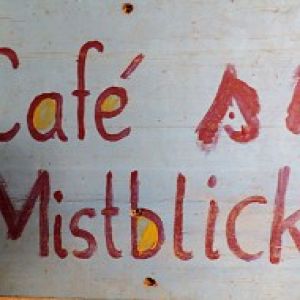First step in honey production
The forced ban on slurry ended this week so long as there isn't a "closed snow cover" and given our current weather, no sign there will be for a few weeks yet. Not sure how often farmers have been out in February to do this.
Fields around us will be the main source of nectar & pollen for the spring. They will in due course turn yellow with dandelions. Last year I Bliped almost the same scene when the grass was cut for the first time after the dandellion blossom was over.
In the Blip, Farmer Franz in his New Holland spreading the slurry. In the background in the centre a darker field which had been covered, next to it a yellow looking field belonging to an "organic" farmer who doesn't use slurry or chemical fertilizer. When the dandelions are in bloom, one can clearly see this organic field has far less flowers than the others but no doubt more grass types. This field will only be cut twice during the year whereas the others are cut 4 or 5 times. Conventional farmers would probably call this "neglect" rather than ecological farming.
For the bees, the dandelion is wonderful while it lasts but that is all they will get from these "golf course" kept grass fields. There are a few fields that are allowed to stand until July (EU subvention to protect nesting wild birds) and from which some grasses and herbs will flower, but they are very few. That's modern high production farming and explains why bees in the middle of cities have a better menu than those in the middle of the countryside!

Comments
Sign in or get an account to comment.


